
To most people around the world, the word ‘Yankee’ is used as a (sometimes derogatory) slang term for Americans in general. To most Americans, ‘Yankee’ refers to a person living in one of the six northeastern states of New England. To die-hard Red Sox fans, just hearing the phrase ‘New York Yankees’ is enough to make their blood boil. But that’s a different story…
Curiously enough, the word ‘yankee’ (ヤンキー) has also established itself within the Japanese lexicon, albeit with extremely different connotations. In Japan, a ‘yankee’ conjures up images of juvenile delinquents and biker gangs (more on that later). While this Japanese subculture may have died down considerably since its heyday in the 1980s, one museum in Hiroshima Prefecture has just opened a special exhibit titled ‘Yankee Anthropology’. This exhibit explores Yankee culture from a serious, academic perspective and includes various related realia. If you’ve always been fascinated by this aspect of Japanese subculture, now’s the perfect excuse to head over to Hiroshima!
First of all, you’re probably wondering how the heck the English word ‘yankee’ came to be associated with delinquent youth and motorcycle gangs in Japan. Our own past RocketNews24 writer Steven summed it up concisely in a 2012 article:
“The term originated in Osaka in the 1970s, referring to the young people who wandered the city streets dressed in the flashy clothes symbolic of the fashion shops of the city’s America-Mura (“America Village”) district. As the term spread across Japan, ‘Yankee’ became synonymous with ‘juvenile delinquent’ and it eventually came to describe an entire subculture as the Yankee image was popularized in magazines, television dramas, comic books and other forms of media throughout the 80s and 90s.”
The distinctive Yankee image became synonymous with anything that was generally frowned upon in the mainstream culture, including a ridiculously long pompadour-like hairstyle, baggy pants, and a uniform that was either too long or too short. Members of bosozoku, or motorcycle gangs, strengthened their intimidating image with long jackets emblazoned with gang logos, an occasional lead pipe accessory, and extravagantly decked-out motorcycles with deafening exhaust pipes.
▼Having trouble imagining the hairstyle? This should help:
▼Let’s not forget about the ladies, either!
(On a side note, be sure to check out the nameneko craze of the early 1980s, in which adorable cats were photographed in typical Yankee garb.)
Now, the Tomonotsu Museum in Fukuyama City, Hiroshima Prefecture is hosting a special exhibit dedicated to Yankee subculture between April 21 – July 21. The exhibit aims to take an in-depth look at this lifestyle which has influenced many Japanese youths over the past few decades. By doing so, its organizers hope to challenge common preconceptions and stereotypes while treating the subject through an academic lens, without any negativity.
Some of the display highlights include a miniature dekotora, or “decorated truck,” a remodeled motorcycle in the gaudy style of the bosozoku, a “golden tearoom” outfitted with hundreds of sheets of gold origami paper, works made by Mitsuo Aida (a calligrapher and poet renowned for his unique style in post-World War II Japan), examples of typical Yankee outfits, and flashy Coming of Age Ceremony kimono (similar to these!). A series of special lectures with a focus on different aspects of the subculture will also be held on predetermined dates.
This special exhibit was made possible through the collaborative efforts of several parties, including donations by former gang members themselves, collectors of bosozoku goods, and the monthly publications of Champ Road magazine and Men’s Knuckle magazine. That’s a whole lot of Yankee love!
Exhibit Information
Tomonotsu Museum
271-1 Tomochotomo, Fukuyama City, Hiroshima Prefecture 720-0201
30 minutes by bus from JR Fukuyama City Station; 5-minute walk from Tomonotsu bus stop
Hours: 10 AM – 5 PM
Closed: Mondays and Tuesdays, but the museum will remain open on April 28, 29 / May 5, 6 / June 10, 21
The museum will be closed on April 30 / May 1, 7, 8
Last day: July 21
General admission is 1000 yen (US$9.79)
[In Japanese]
鞆の津ミュージアム
〒720-0201 広島県福山市鞆町鞆 271-1
JR「福山駅」バス30分 /「鞆の浦」バス停徒歩5分
As a sneak peak, we’ll leave you with some screenshots of the exhibit from the official museum website. Enjoy!
Sources: Ameba News, Tomonotsu Museum
Images: Tomonotsu Museum, Ameblo, Tumblr

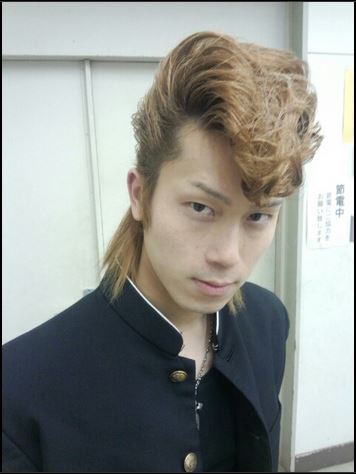
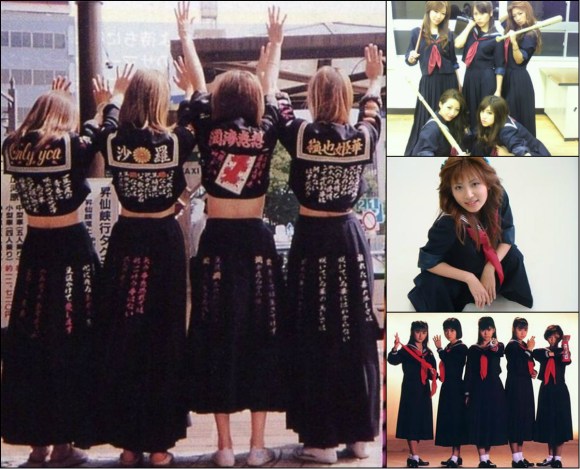
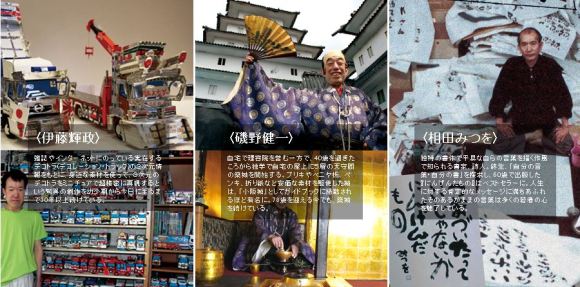
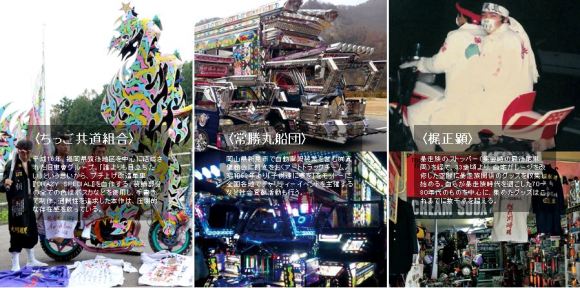
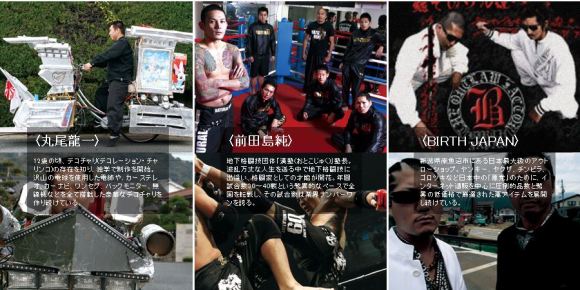
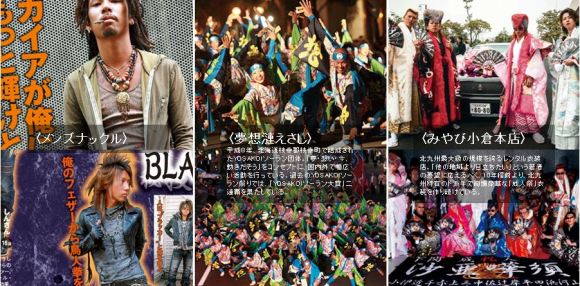
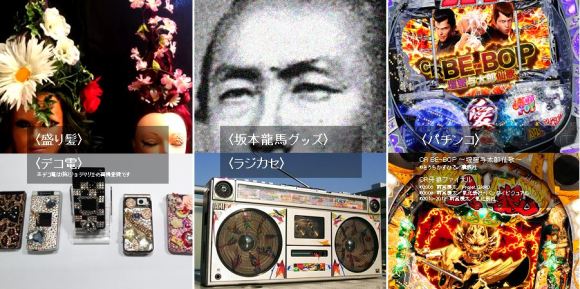
 Akiyuki Nosaka, celebrated author of Grave of the Fireflies, passes away
Akiyuki Nosaka, celebrated author of Grave of the Fireflies, passes away That time Seiji called JASRAC to ask why he didn’t get paid royalties for his song being on TV
That time Seiji called JASRAC to ask why he didn’t get paid royalties for his song being on TV Hayao Miyazaki says Happy New Year to Studio Ghibli fans with new art for Year of the Horse
Hayao Miyazaki says Happy New Year to Studio Ghibli fans with new art for Year of the Horse 7 great places to see Mt. Fuji from without having to climb it
7 great places to see Mt. Fuji from without having to climb it Draw like a Studio Ghibli anime artist with exclusive watercolour set approved by Hayao Miyazaki
Draw like a Studio Ghibli anime artist with exclusive watercolour set approved by Hayao Miyazaki Akiyuki Nosaka, celebrated author of Grave of the Fireflies, passes away
Akiyuki Nosaka, celebrated author of Grave of the Fireflies, passes away That time Seiji called JASRAC to ask why he didn’t get paid royalties for his song being on TV
That time Seiji called JASRAC to ask why he didn’t get paid royalties for his song being on TV Hayao Miyazaki says Happy New Year to Studio Ghibli fans with new art for Year of the Horse
Hayao Miyazaki says Happy New Year to Studio Ghibli fans with new art for Year of the Horse 7 great places to see Mt. Fuji from without having to climb it
7 great places to see Mt. Fuji from without having to climb it Draw like a Studio Ghibli anime artist with exclusive watercolour set approved by Hayao Miyazaki
Draw like a Studio Ghibli anime artist with exclusive watercolour set approved by Hayao Miyazaki We found possibly the quietest Japanese-style hotel in Tokyo’s bustling Shinjuku district
We found possibly the quietest Japanese-style hotel in Tokyo’s bustling Shinjuku district Nattoku! Factory offers free factory tours of a famous natto brand production process
Nattoku! Factory offers free factory tours of a famous natto brand production process A deep-fried sushi senbero awaits from Super Value【Japan’s Best Home Senbero】
A deep-fried sushi senbero awaits from Super Value【Japan’s Best Home Senbero】 We try all-you-can-eat raw eggs for 730 yen, turns out to be way better than it sounds
We try all-you-can-eat raw eggs for 730 yen, turns out to be way better than it sounds Usher good luck into your home this New Year with Totoro tenugui from Studio Ghibli
Usher good luck into your home this New Year with Totoro tenugui from Studio Ghibli Starbucks Japan ready to get Year of the Horse started with adorable drinkware and plushies【Pics】
Starbucks Japan ready to get Year of the Horse started with adorable drinkware and plushies【Pics】 Cyberpunk anime meets traditional culture in Ghost in the Shell gold leaf Japanese changing screens
Cyberpunk anime meets traditional culture in Ghost in the Shell gold leaf Japanese changing screens Hello Kitty Choco Egg figures are an adorable trip through three periods of Japanese pop culture【Pics】
Hello Kitty Choco Egg figures are an adorable trip through three periods of Japanese pop culture【Pics】 7-Eleven Japan’s ramen-cooking robot whipped us up a bowl of noodles【Taste test】
7-Eleven Japan’s ramen-cooking robot whipped us up a bowl of noodles【Taste test】 Japan’s otoshidama tradition of giving kids money at New Year’s gets a social welfare upgrade
Japan’s otoshidama tradition of giving kids money at New Year’s gets a social welfare upgrade Sumo Sanrio! Hello Kitty and pals team up with Japan Sumo Association for new merch【Pics】
Sumo Sanrio! Hello Kitty and pals team up with Japan Sumo Association for new merch【Pics】 More Than a Capsule Stay: Why Solo Travelers Choose “global cabin Yokohama Chinatown”
More Than a Capsule Stay: Why Solo Travelers Choose “global cabin Yokohama Chinatown” Japan’s oldest largetooth sawfish in captivity back on display in Mie Prefecture
Japan’s oldest largetooth sawfish in captivity back on display in Mie Prefecture 7-Eleven Japan starts new temporary luggage storage service in over 300 branches
7-Eleven Japan starts new temporary luggage storage service in over 300 branches Disillusionment at Tsukiji’s tourist-target prices led us to a great ramen restaurant in Tokyo
Disillusionment at Tsukiji’s tourist-target prices led us to a great ramen restaurant in Tokyo Starbucks teams up with 166-year-old Kyoto doll maker for Year of the Horse decorations【Photos】
Starbucks teams up with 166-year-old Kyoto doll maker for Year of the Horse decorations【Photos】 Tokyo considering law requiring more trash cans following litter increase in heavily touristed area
Tokyo considering law requiring more trash cans following litter increase in heavily touristed area Tokyo’s Tsukiji sushi neighborhood asks tour groups to stay away for the rest of the month
Tokyo’s Tsukiji sushi neighborhood asks tour groups to stay away for the rest of the month Tokyo event lets you travel back in time, for free, to celebrate 100 years since Showa era start
Tokyo event lets you travel back in time, for free, to celebrate 100 years since Showa era start Sanrio theme park in Japan announces plans to expand into a Sanrio resort
Sanrio theme park in Japan announces plans to expand into a Sanrio resort Japan may add Japanese language proficiency, lifestyle classes to permanent foreign resident requirements
Japan may add Japanese language proficiency, lifestyle classes to permanent foreign resident requirements Stamina-destroying “Paralysis Noodles” are Tokyo’s newest over-the-top ramen innovation
Stamina-destroying “Paralysis Noodles” are Tokyo’s newest over-the-top ramen innovation Survey asks foreign tourists what bothered them in Japan, more than half gave same answer
Survey asks foreign tourists what bothered them in Japan, more than half gave same answer Japan’s human washing machines will go on sale to general public, demos to be held in Tokyo
Japan’s human washing machines will go on sale to general public, demos to be held in Tokyo Japan’s deadliest food claims more victims, but why do people keep eating it for New Year’s?
Japan’s deadliest food claims more victims, but why do people keep eating it for New Year’s? We deeply regret going into this tunnel on our walk in the mountains of Japan
We deeply regret going into this tunnel on our walk in the mountains of Japan Studio Ghibli releases Kodama forest spirits from Princess Mononoke to light up your home
Studio Ghibli releases Kodama forest spirits from Princess Mononoke to light up your home Major Japanese hotel chain says reservations via overseas booking sites may not be valid
Major Japanese hotel chain says reservations via overseas booking sites may not be valid Put sesame oil in your coffee? Japanese maker says it’s the best way to start your day【Taste test】
Put sesame oil in your coffee? Japanese maker says it’s the best way to start your day【Taste test】 No more using real katana for tourism activities, Japan’s National Police Agency says
No more using real katana for tourism activities, Japan’s National Police Agency says Starbucks Japan reveals new sakura drinkware collection, inspired by evening cherry blossoms
Starbucks Japan reveals new sakura drinkware collection, inspired by evening cherry blossoms Updated cherry blossom forecast shows extra-long sakura season for Japan this year
Updated cherry blossom forecast shows extra-long sakura season for Japan this year We found possibly the quietest Japanese-style hotel in Tokyo’s bustling Shinjuku district
We found possibly the quietest Japanese-style hotel in Tokyo’s bustling Shinjuku district Nattoku! Factory offers free factory tours of a famous natto brand production process
Nattoku! Factory offers free factory tours of a famous natto brand production process A deep-fried sushi senbero awaits from Super Value【Japan’s Best Home Senbero】
A deep-fried sushi senbero awaits from Super Value【Japan’s Best Home Senbero】 We try all-you-can-eat raw eggs for 730 yen, turns out to be way better than it sounds
We try all-you-can-eat raw eggs for 730 yen, turns out to be way better than it sounds Usher good luck into your home this New Year with Totoro tenugui from Studio Ghibli
Usher good luck into your home this New Year with Totoro tenugui from Studio Ghibli Beautiful unofficial Ghibli village in a Japanese forest is a magical place to spend an afternoon
Beautiful unofficial Ghibli village in a Japanese forest is a magical place to spend an afternoon We revisited Sweets Paradise after a decade to see if Japan’s dessert buffet still delivers
We revisited Sweets Paradise after a decade to see if Japan’s dessert buffet still delivers Japanese Twitter reveals the one Japanese word that gets English-speakers super excited
Japanese Twitter reveals the one Japanese word that gets English-speakers super excited Tokyo cafe staffed by robots piloted by paralyzed and otherwise housebound people
Tokyo cafe staffed by robots piloted by paralyzed and otherwise housebound people Starbucks Japan adds a Love and Peach Frappuccino to its menu for a limited time
Starbucks Japan adds a Love and Peach Frappuccino to its menu for a limited time A guide to visiting Sagamiko Illumination, one of the three biggest light-ups in Kanto
A guide to visiting Sagamiko Illumination, one of the three biggest light-ups in Kanto Here’s the oldest recipe for Japanese curry in existence, and how it tastes【SoraKitchen】
Here’s the oldest recipe for Japanese curry in existence, and how it tastes【SoraKitchen】 Studio Ghibli releases New Year’s stamps for 2024
Studio Ghibli releases New Year’s stamps for 2024
Leave a Reply